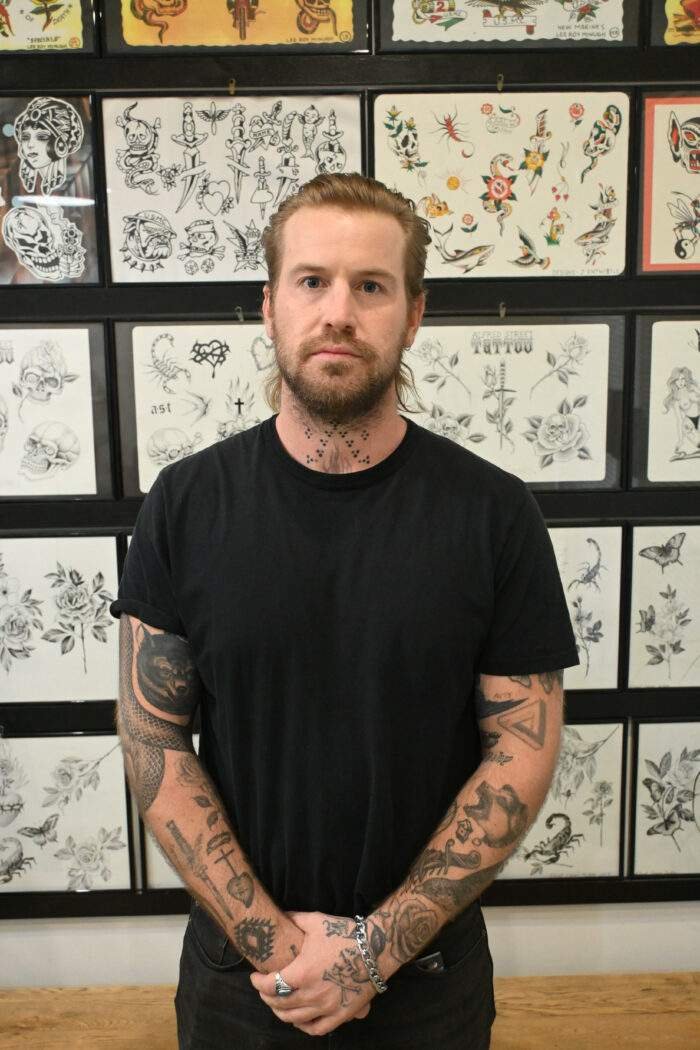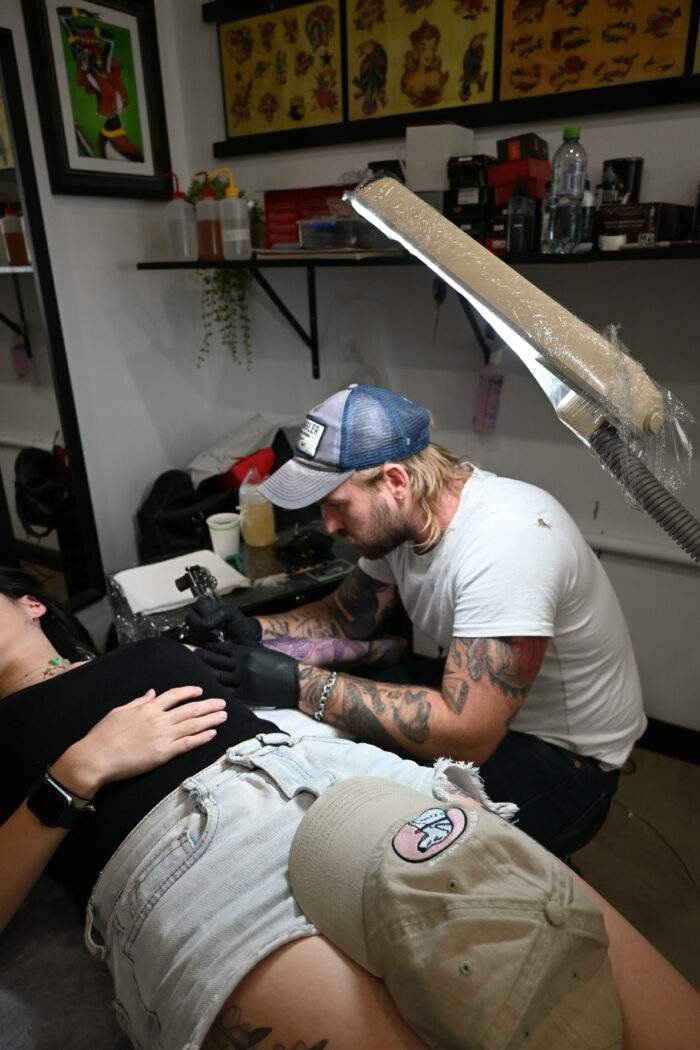It’s Always Tattoo Time with Ed Taemets

It often seems like what captures attention in the modern world is sensationalism. While that may be true to some extent, this is nothing new. What endures is not flashy trends but rather what is substantive. Auckland’s Tattoo Time may not be the largest convention of its kind, but it has evolved to become one of the most respected and admired destinations for those in the community who merge tradition and progression of this artform dating back to nearly 5,000 BC. Tattoo artist Ed Taemets has been an essential part of the success of this gathering which proudly takes a different direction than the majority of conventions based around tattooing. When attending, it’s easy to feel what sets Tattoo Time apart from others. Mr. Taemets passion can be felt as he communicates, “Tattooing is so ever-present in this age – it leaves almost no one untouched, especially in the western realm, everyone has a family member with tattoos or at least someone who does. With it being so widespread, its power can be felt – taking control over a sense of identity is seen as desirable and important in individualistic society. The culture of tattooing is so special, and I believe it brings people together through art, expression and philosophy. While tattooing and its designs and iconography is generally categorically unique in its treatment and expression, a lot of the imagery in traditional Western Tattooing is derived from classical designs and high art of the renaissance, as well as ancient imagery from Asia. Its link with what is generally considered fine art is undeniable. I believe the two cross over, although fine art is generally a depiction of an idyllic world while tattooing and its attitudes tend to be more of an honest expression of human experience. Being on more of an intimate scale, I believe Tattoo Time allows for those honest connections and expressions to unfold, and I strive to achieve that experience with other artists and the broader audience at the event.”

Spearheaded by Spider Sinclair, a highly respected veteran of Auckland’s tattoo industry, Tattoo Time visibly stands out as unique from other conventions in size as its attendees number between 1,200-1,600. In fact, the organizers prefer to describe it not as a convention but as a, “curated gathering of like-minded artists who not only possess exceptional skill but also uphold a strong reputation within the community.” This distinction tells you quite a bit about the mindset of Tattoo Time. The emphasis here is on pushing the art of tattooing forward while honouring its legacy. The artists who are featured at Tattoo Time are meticulously curated for both their original style and expertise. It’s refreshing and exciting to see a community of artists who are committed to a “voice” that is their own and is honed to the point of mastery. Its respect for traditional techniques and styles while serving as a platform for innovation and creativity reinforces the fact that this event is designed to speak to those cognizant of the power of tattooing.
While the creations and designs of different artists are the fuel of Tattoo Time, its bedrock foundation is in relationships. The artists who are invited to be featured are members of a community that is well connected. As such, they are aware that personal history combines with a history of the artform in this expressive endeavor. Mentorship flourishes naturally in this environment. Artists from different backgrounds and specialties come together to enrich each other’s understanding. Ed Taemets is revered among his fellow artists for his ability and creativity, but he has also made his presence more impactful as a proponent for inclusion and mentorship via Tattoo Time. Taemets is recognized by many as someone who is more than simply one of the premier artists in the community; he is the facilitator of deeper relationships that promise to ground the community itself. Watching Ed work is astonishing. Listening to him speak so eloquently about the historical significance of different cultural contributions to tattooing is an art history lesson. He remarks, “For example, fine line black and grey tattooing, particularly within the context of Mexican gang and prison culture, has evolved into a profound artistic expression laden with symbolism and aesthetic appeal. At its core, this style intertwines elements of traditional Mexican religious imagery with motifs from gang iconography, creating a visual language that speaks of resilience, identity, and a complexity of duality of the world. The intricacy of design in fine line blackwork tattoos contributes significantly to its appeal for the wider audience that may not have an much knowledge of visual language of the wider zeitgeist of tattooing. This level of detail allows for a richness and complexity that I believe evokes nostalgia and an air of the timeless. The fine lines and subtle shading techniques used in these tattoos lend themselves well to creating depth and dimension that is a hallmark of the stye. The size and fineness of fine line blackwork tattoos also contributes to its broad appeal – Unlike larger and more conspicuous tattoo styles, like American Traditional or Japanese tattooing, fine line tattoos can be executed on a smaller scale. This makes them more accessible to individuals who prefer a more understated or discreet tattoo, allowing for placement on areas like wrists, ankles, or behind the ear etc. In today’s tattooing landscape, fine line blackwork has become one of the most ubiquitous styles.”
Tattoo Time is an accessible and welcoming experience and attending it can be incredibly fascinating for the curious. The organizers and the artists who take part in this annual event are fixated on the ties which bind them to their expressive art and the relationships that will ground their journey. To walk among these artists and gain a sense of their purposeful existence is to feel the breath of a living artform and witness its continuing evolution.
Writer : Calvin Hooney







